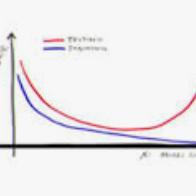People can learn rich, general-purpose conceptual representations from only raw perceptual inputs. Current machine learning approaches fall well short of these human standards, although different modeling traditions often have complementary strengths. Symbolic models can capture the compositional and causal knowledge that enables flexible generalization, but they struggle to learn from raw inputs, relying on strong abstractions and simplifying assumptions. Neural network models can learn directly from raw data, but they struggle to capture compositional and causal structure and typically must retrain to tackle new tasks. We bring together these two traditions to learn generative models of concepts that capture rich compositional and causal structure, while learning from raw data. We develop a generative neuro-symbolic (GNS) model of handwritten character concepts that uses the control flow of a probabilistic program, coupled with symbolic stroke primitives and a symbolic image renderer, to represent the causal and compositional processes by which characters are formed. The distributions of parts (strokes), and correlations between parts, are modeled with neural network subroutines, allowing the model to learn directly from raw data and express nonparametric statistical relationships. We apply our model to the Omniglot challenge of human-level concept learning, using a background set of alphabets to learn an expressive prior distribution over character drawings. In a subsequent evaluation, our GNS model uses probabilistic inference to learn rich conceptual representations from a single training image that generalize to 4 unique tasks, succeeding where previous work has fallen short.
翻译:人们只能从原始的感知投入中学习丰富、通用的概念表述。 目前机器学习的方法远远低于这些人类标准, 尽管不同的模型传统往往具有互补的优势。 符号模型可以捕捉成份和因果知识, 能够灵活地概括, 但是他们很难从原始投入中学习。 神经网络模型可以直接从原始数据中学习成份和因果结构, 但是他们要努力捕捉成份和因果结构, 并且通常必须重新训练以完成新任务。 我们把这两种传统汇集在一起, 来学习捕捉丰富成份和因果结构概念的基因化模型, 同时从原始数据中学习。 我们开发了一个基因神经同步(GNS)模型(GNS) 手写字符概念的基因化模型(GNS)模型(GNS)模型), 这个模型可以使用概率性化程序, 以及符号性原始的原始的原始和象征的图像转换, 将我们概念的模型(strooges) 应用一个模型, 来模拟整个结构的缩图象学 。





